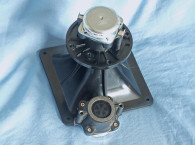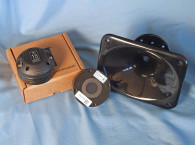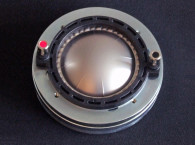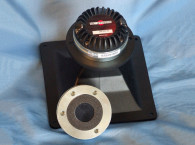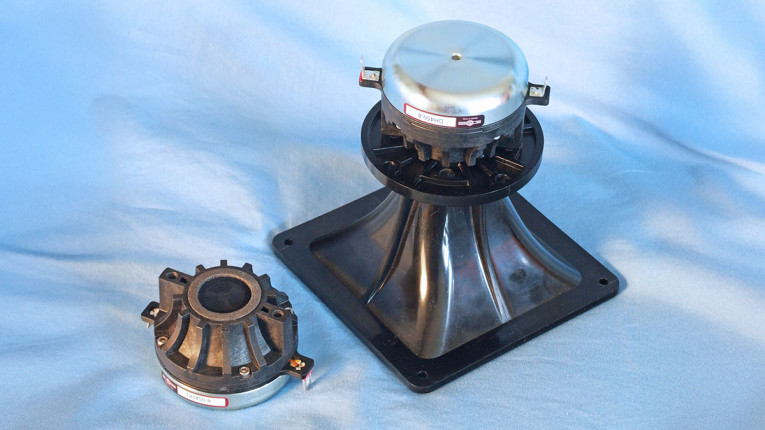
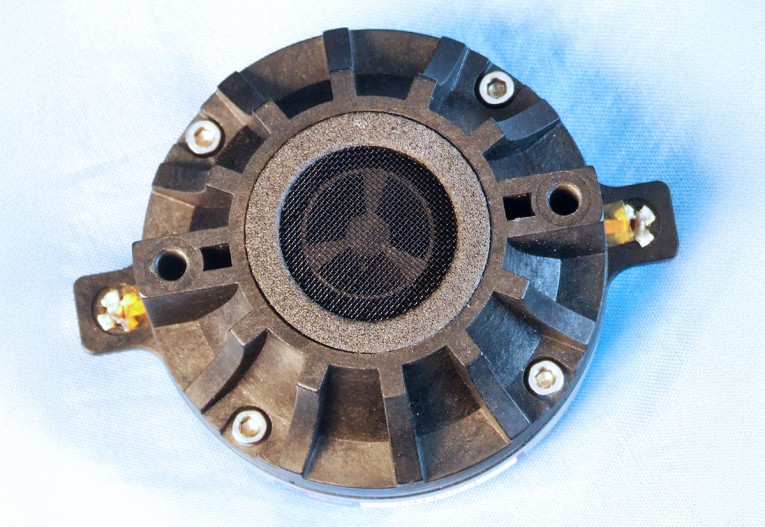
As with the DE111, the DH450 has a two-channel phase, but with deliberately twisted internal channel. If you look at the diagram shown in Photo 3, it compares the DE111 dual-channel phase plug to the dual-channel phase plug of the DE350, which is identical to the DH450. The DE111 phase plug channels are round and symmetrical for both the inside and outside channels, while the DE350 has a round symmetrical outside channel, but has an inside channel with a patent-pending twist. The “twist” aspect of the phase plug results in overall improved frequency response for the DH450-8.

Additional features include a 1kHz recommended crossover frequency (second-order or higher high-pass filter), 1kHz to 18kHz range, 109dB at 2.83V/1m sensitivity and a 80W continuous power rating, making this compact compression driver well suited for applications, such as small stage monitors and PA speakers. Weighing in at a lightweight 530 grams (the DE350 weighs 275 grams) also makes the DH450-8 an ideal transducer for the new generation of lighter, more compact line array loudspeakers.
The horn supplied for use with the DH450-8 was the ME10v2. This Hyperbolic Cosine flare horn has a 1” exit bolt on type made from injection-molded ABS, and provides a 90°×60° coverage pattern and a 1500Hz cut-off frequency, making it a good match for the DH450-8 compression driver, plus unlike the DE350 that I had to custom drill holes for, it has a hole mounting pattern that matches the DH450. Figure 1 and Figure 2 give the horizontal and vertical directivity maps for the ME10v2.
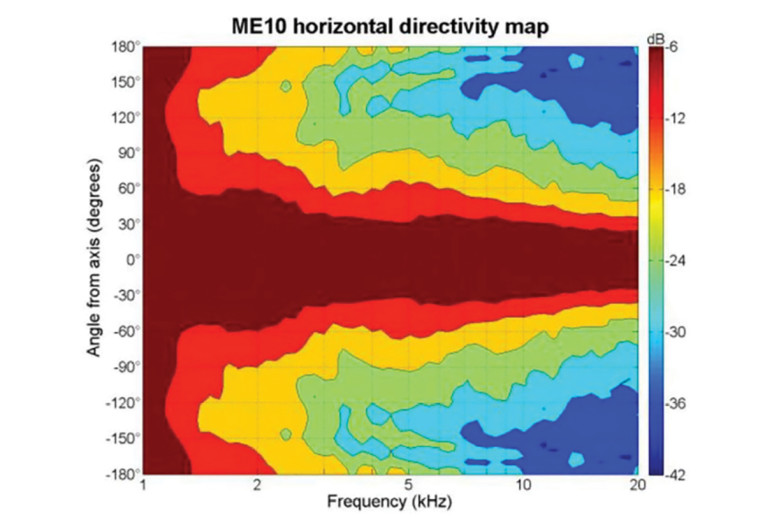
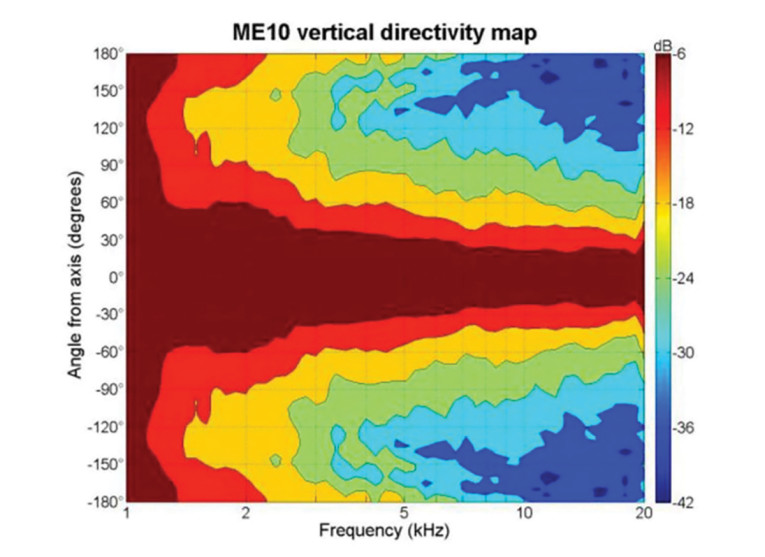
Testing began using the LinearX LMS analyzer to produce the 300-point stepped sine wave impedance plot shown in Figure 3, the solid black curve represents the B&C Speakers DH450-8 mounted on the ME10v2 horn and the dashed blue curve represents the compression driver without the horn. With a 5.71Ω DCR (Re), the minimum impedance of the DH450/ME10v2 was 7.06Ω and at 4.73kHz.
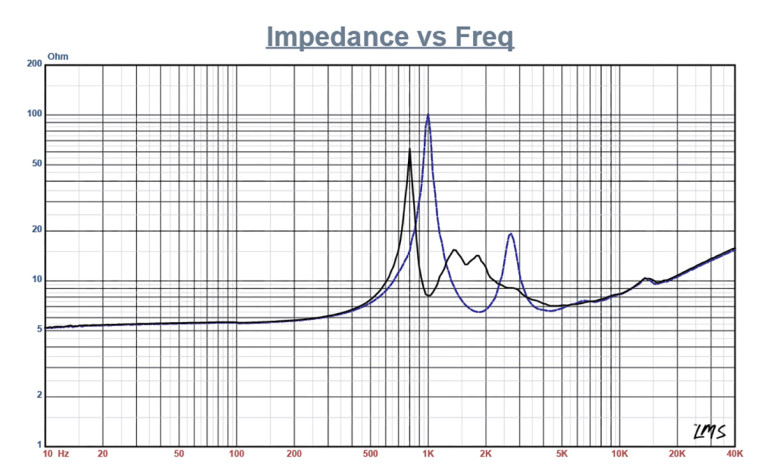
For the next set of SPL measurements, I free-air mounted the B&C Speakers DH450/ME10v2 combination without an enclosure and measured both the horizontal and vertical on- and off-axis at 2.0V/0.5m (normalized to 2.83V/1m) from 0° on-axis to 60° off-axis using the Loudsoft FINE R+D analyzer and GRAS 46BE microphone (supplied courtesy of Loudsoft and GRAS Sound & Vibration). Figure 4 displays the on-axis frequency response of the DH450/ME10v2 combination, which is ±3.5dB with no major anomalies from the 1kHz recommended crossover frequency to about 10kHz, beginning its second-order low-pass roll-off at 20.5kHz, requiring the usual horn equalization.
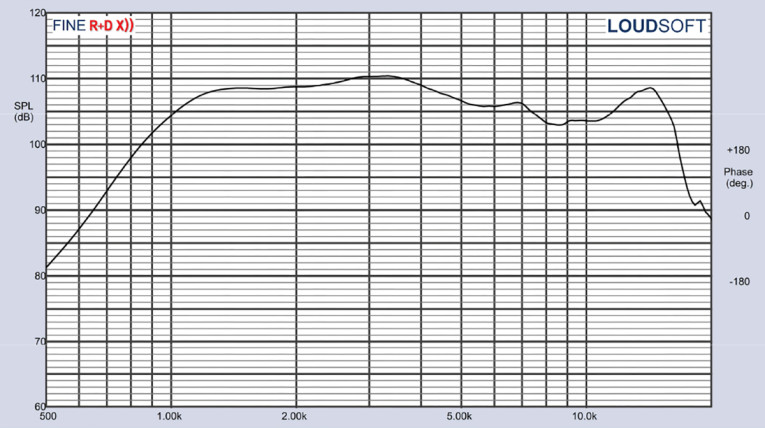
Figure 5 shows the horizontal SPL data from 0° on-axis to 60° off-axis, with the normalized version depicted in Figure 6. Note, since B&C Speakers supplied the horizontal and vertical directivity maps for the ME10v2, I chose not to do the vertical SPL measurements, and just showed the horizontal polar plot using the CLIO Pocket Analyzer (Figure 7). Last, Figure 8 illustrates the two-sample SPL comparison showing the two B&C Speakers DH450-8 compression driver samples to be very closely matched ≤0.25dB throughout the operating range of the transducer.
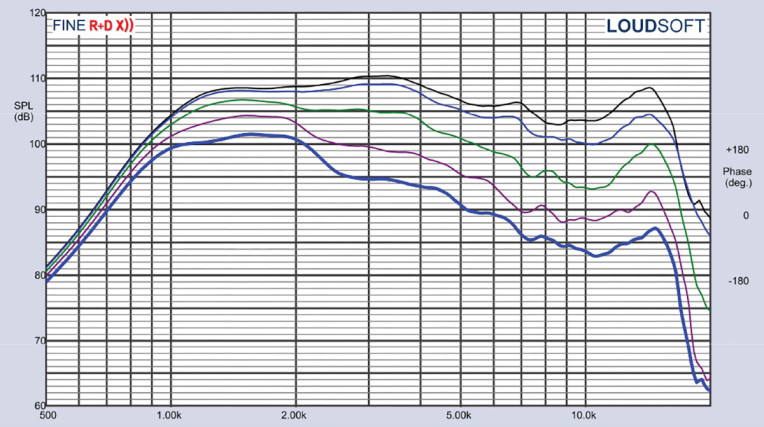

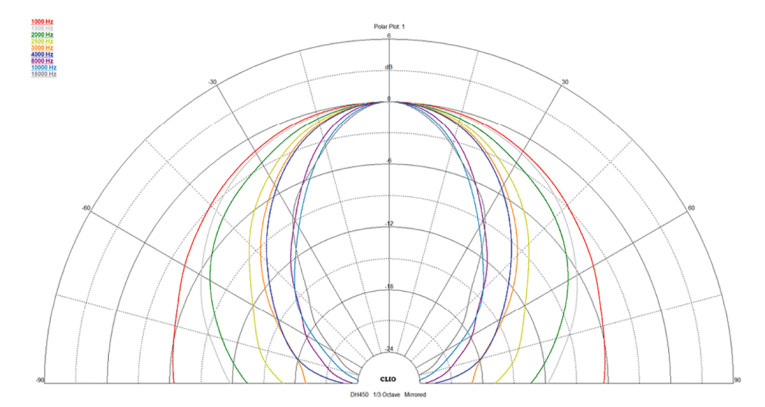

For the remaining series of tests, I set up the Listen AudioConnect analyzer, SoundCheck 21 software, and the Listen ¼” SCM microphone to measure distortion and generate time-frequency plots (courtesy of Listen, Inc.). For the distortion measurement, I mounted the DH450/ME10v2 combination in free-air in the same manner as was used for the frequency response measurements, and set the SPL to 104dB at 1m (1.8V determined by using a pink noise stimulus generator and internal SLM in the SoundCheck 21 software).
Then, I measured the distortion with the Listen ¼” measurement microphone located 10cm from the mouth of the horn. This produced the distortion curves shown in Figure 9 (red curve=second harmonic, blue curve=third harmonic). Note the very low third harmonic, in fact, it’s so low the second harmonic totally tracks the THD curve. I then set up SoundCheck 21 to generate a 2.83V/1m impulse response and imported the data into Listen’s SoundMap Time/Frequency software. Figure 10 shows the resulting cumulative spectral decay (CSD) waterfall plot. Figure 11 shows the Short Time Fourier Transform (STFT) plot.
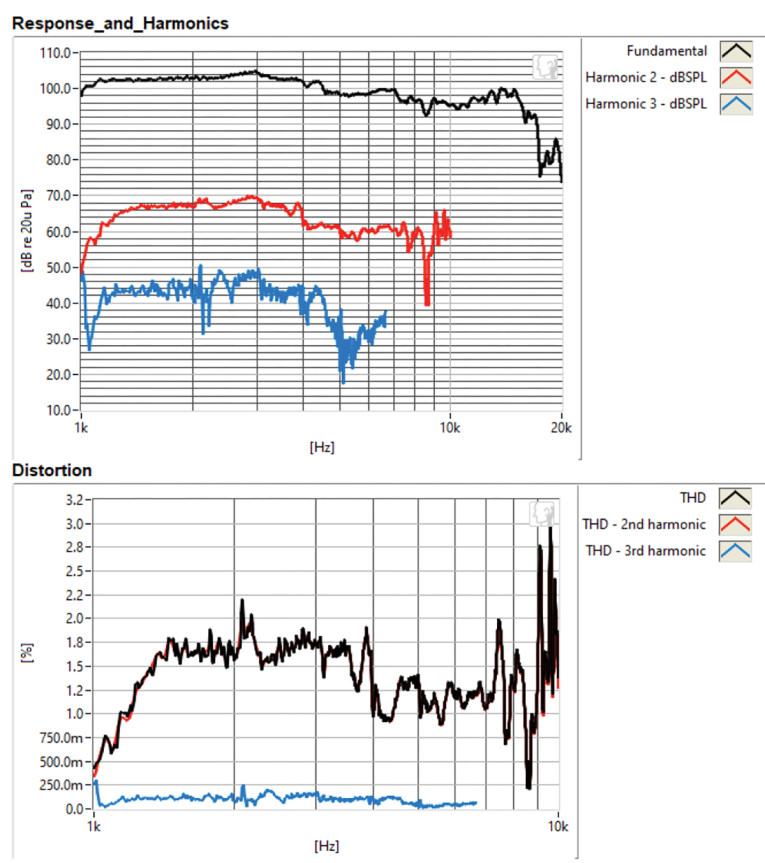
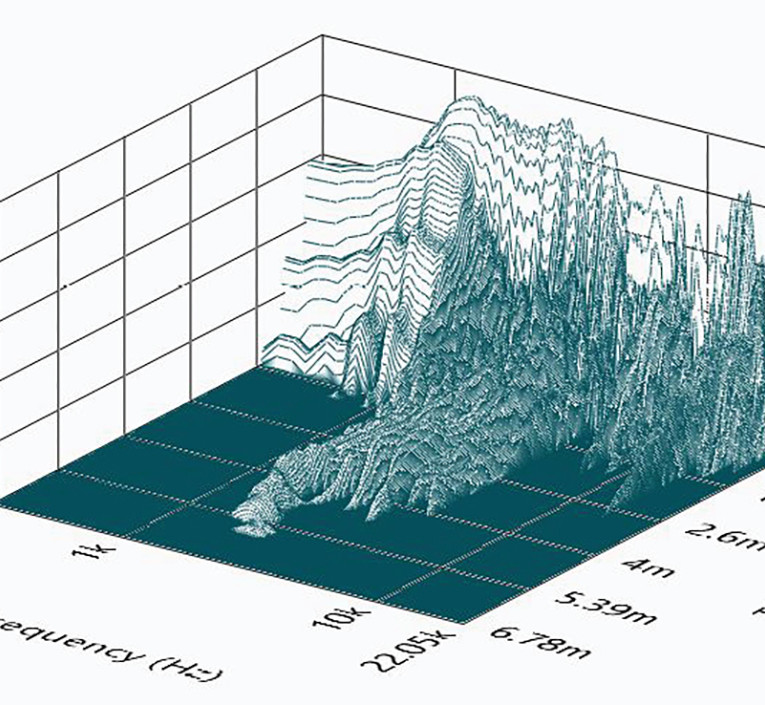
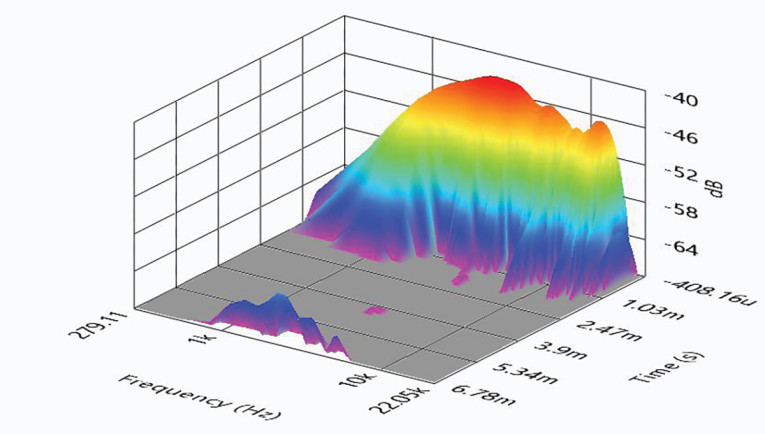
From the observed data, the compact DH450-8 displays excellent performance for an 80W power handling compression driver in such a small package and is a welcome addition to B&C Speakers’ extensive lineup of neo motor 1” compression drivers. For more information, visit www.bcspeakers.com. VC
This article was originally published in Voice Coil, August 2024




